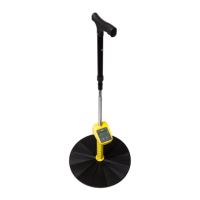12
The more regularly you take readings the better. Astute farmers will take readings
weekly, sometimes more often during critical times of the year and less frequently
during times of static conditions.
The more samples taken per paddock the less margin of error. We recommend 20
to 40 samples per paddock but if you have bad conditions ie. pugged paddocks,
then more samples should be taken.
Most paddocks will have areas of good growth and areas of poor growth. If
recently grazed, the pasture may be clumpy. Ensure that your walk includes
representative samples of both areas. Avoid tracks, stock camp sites and other
uncharacteristic areas.
Take samples every 3 paces or so, rather than choosing by eye the spot to sample.
This removes operator preference for long or short patches.
Be consistent. Plan the same walk every time although it can be done
in reverse. This allows each walk to be compared with another.
The plate meter can save recorded average height readings to a specific paddock
number which can be selected on the plate meter. These readings can then be
downloaded from the plate meter via the mini USB cable and aligned with your
paddocks in “walk order”. The walk order will need to be defined in the Jenquip
Pasture Management Software.
1 Switch the unit on using the toggle switch at the back.
2 Reset by holding the ‘Reset’ button until the display changes to ‘0’. This
should be accompanied by 2 short beeps.
3 Walk across the paddock taking readings every few paces. You will hear a
beep every time a reading is stored. The average kg DM/ha is immediately

